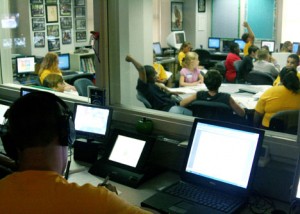Per this video, I’m preparing for a presentation at the International Society of Humor Studies (yes there’s such a thing). I present on Tuesday (July 5) in Boston at the international meeting. If you’re near Boston University, please enroll and attend! This is a scholarly and professional organization dedicated to the advancement of humor research. Many of the Society’s members are university and college professors in the Arts and Humanities, Biological and Social Sciences and Education. Then there’s me.
Given my “prolific” experience as a YouTube “comedian” (220 million views, and about 200K per day) and my publication of “Beyond Viral,” I’m tackling humor from the perspective of comedy videos on YouTube and their “rankings.” My background as a psychology student (Georgetown) and MBA in marketing (statistics) also helps, and so does my decades of analyzing market research for my job as a marketer (now at Johnson & Johnson). But you, dear reader, offer perhaps other valuable perspectives.
Here’s the fundamental question this presentation (including a white paper) will address:
What can we learn about what this planet finds funny, based on the data available on YouTube?
Do you want to help? Here’s some information if you have time/interest…
- YouTube, as the world’s largest video site and 2nd most-popular search engine after Google, is a good basis to explore humor. The videos can be sorted in many ways, and the large data sample is a rich source of insights. There are, of course, three “confounding” variables to extrapolating YouTube data to the planet’s humor preference: a) Selection bias: YouTube viewers are not necessarily representative, b) Popularity bias: videos by “popular” webstars generally get more views and higher ratings regardless of their humor quotient, c) Algorithm bias: YouTube videos for many years were ranked by “most viewed” or “favorite” videos, which created a “rich get rich” effect… once a video achieved critical mass, it received new views based on its ranking and effectively “locked” some weak videos in a place of perpetual viewing. That’s changed, and now videos are “spotlighted” based such criteria as percentage of comments, promoted videos, and other concealed factors that change.
- I’ve spent countless hours reviewing the top 100 most-viewed comedy videos on YouTube (see preliminary findings by clicking “MORE” at the bottom of this post), and categorizing them by a dozen plus criteria. Your contribution, if you wish to help, need not be as exhaustive. I had to view, classify, expand classifications and review them multiple times. I found only about 12 of them funny by my subjective standards, but that’s not the goal. After viewing them each 5-10 times, I can say none are funny anymore to me.
- You can help any way you have time, assuming a) you find this research interesting and b) you have time free between now and Monday (July 4). You could spend 1 minute providing a comment about how you might suggest analyzing YouTube. Or maybe you’re keen on spending a hours actually reviewing videos based on criteria/methodology you prefer (do it, don’t ask for my feedback). If you can find some interesting published method for classifying humor (edgy/cute or intellectual/emotional) than use it. Or create your own based on a hypothesis (are Asians more likely to be top-rated comedians? Are women?).
- What’s in it for you? You’ll be part of something that, to my knowledge, has never been done (although if I’m wrong and you find otherwise let me know). We’re combining two disciplines (the art of comedy and the science of analysis/psychology) that rarely meet. I’ll be grateful for your comments and volunteer assignments, and I’ll credit you in the report and in a YouTube video if you provide ANY meaningful contribution (like a 2-page summary of quantifiably substantiated findings).
- What do you do next? If you have an idea, run with it. You could sort comedy videos by date (time period) and look at objective patterns.
- You could review most-viewed or most-subscribed comedians and observe similarities and differences in some quantifiable way. Just try to avoid your subjective opinion (what YOU like/don’t), and instead focus on quantifiable patterns based on what crowds like (as measured by rankings/ratings/comments/likes/dislikes)… as you’ll see by my “preliminary findings” this does require some subjective calls but be consistant and note criteria.
- You’ll also have to rely on your YouTube knowledge to isolate “confounding variables” (Shaytards love Shaycarl and tend to view/rate his videos as high, which could lead to a faulty conclusion that it’s representative of the planet’s preference about humor. The goal isn’t to find out what hard-core YouTubers like (or specific “tribes” of people) but something bigger.
- You could research other academic research on humor that provide clues. Or use an already researched classification model for comedy/humor.
- Instead of focusing on comedy videos, you could explore the most-subscribed channels on YouTube that classify themselves as comedy. What are the patterns?
- Do you wait for my okay to start? Nope– just have a go. Even if your efforts don’t produce anything meaningful, you’ll be credited for your effort (just describe your approach and findings in a simple summary). I doubt we’ll see two people tackle it the same way, so there’s little risk of redundancy.
- Timing: Again this is being presented on Tuesday so I need to wrap it by Monday, July 4. I hope you’ll join the effort! I’ll be checking comments between now and Monday regularly.
To read about my approach and findings so far, click MORE…
Continue reading Crowdsourcing Data on Humor Via YouTube: Want to Help?


